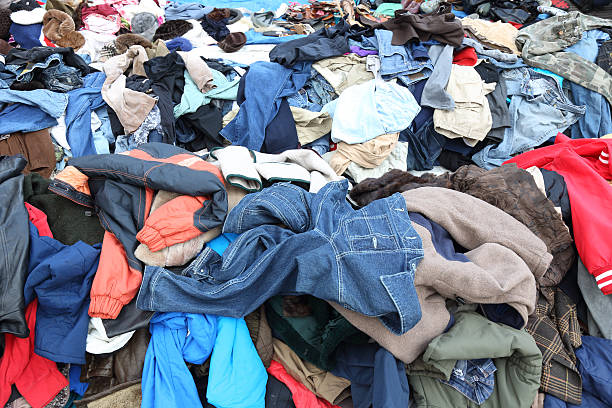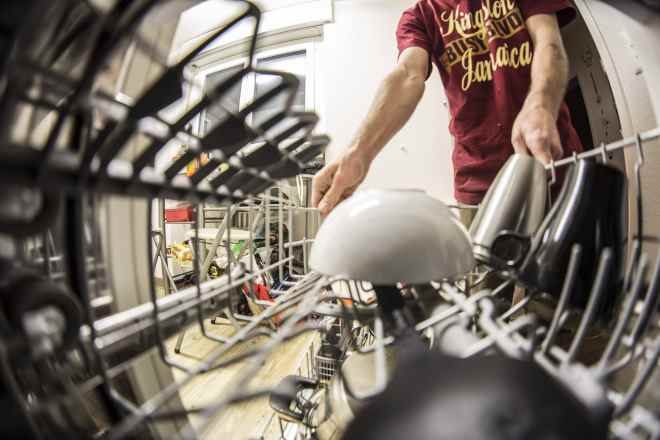DIY: Turn Old Clothes Into Something New 👕✨
Got a pile of old clothes? Don’t throw them away — transform them into something completely new. Learn how simple it is to redesign your wardrobe with easy DIY sewing and cutting ideas. No special tools needed — just creativity and a few spare minutes at home. Every small project helps you create something unique, fun, and sustainable.

What Is DIY Clothing Transformation?
DIY clothing transformation involves taking existing garments and reimagining them into new, wearable pieces. This process, often called upcycling, goes beyond simple repairs or alterations. It encompasses cutting, sewing, dyeing, embellishing, and reconstructing fabrics to create entirely different items. A pair of jeans might become a stylish tote bag, while an oversized shirt can transform into a trendy crop top. The practice combines creativity with practical skills, allowing anyone to customize their wardrobe without purchasing new items. Unlike traditional recycling, which breaks materials down, upcycling adds value and extends the life of textiles in their current form.
How Can You Upcycle Old Jeans and Shirts?
Old jeans and shirts are ideal candidates for transformation due to their durable fabrics and versatility. Denim jeans can be shortened into stylish shorts, distressed for a vintage look, or cut into patches for jackets and bags. The sturdy material also works well for household items like coasters, placemats, or storage organizers. Shirts offer equally diverse possibilities: button-ups can become sleeveless vests, oversized tees transform into fitted styles through side ties or cropping, and collars or pockets can be removed for minimalist aesthetics. Combining pieces from multiple garments creates unique patchwork designs. Simple techniques like bleaching, tie-dyeing, or fabric painting add color and pattern variations. Even basic hand-sewing skills enable significant transformations, though a sewing machine speeds up the process and allows for more complex projects.
What Are Some Creative Sewing Ideas for Beginners?
Starting with manageable projects builds confidence and skills. Simple ideas include converting t-shirts into reusable shopping bags by sewing the bottom hem closed and cutting handles from the sleeves. Pillowcases made from favorite old shirts preserve memories while serving a functional purpose. No-sew options exist too: fabric glue and iron-on hemming tape allow transformations without threading a needle. For those ready to use a machine, try making headbands from fabric scraps, turning long sleeves into leg warmers, or creating patchwork quilts from various garment pieces. Embroidery and appliqué add decorative elements to plain items, personalizing them with unique designs. Starting with forgiving fabrics like cotton makes learning easier, as mistakes can often be hidden or incorporated into the design. Online tutorials provide step-by-step guidance, and thrift stores offer inexpensive practice materials.
Why Choose Sustainable Fashion at Home?
The fashion industry ranks among the world’s largest polluters, with textile production consuming vast water resources and generating significant waste. Fast fashion encourages rapid consumption and disposal, filling landfills with garments that could serve for years. Creating sustainable fashion at home directly counters this cycle. Upcycling reduces demand for new production, conserving resources and minimizing environmental impact. It also saves money, as transforming existing clothes costs far less than buying new items. Beyond environmental and financial benefits, DIY fashion fosters creativity and self-expression. Each piece becomes unique, reflecting personal style rather than mass-market trends. The skills developed through upcycling promote self-sufficiency and mindful consumption. Teaching these practices to others, especially younger generations, spreads awareness about sustainable living and responsible resource use.
Where Can You Find Thrift Flip Tutorials?
Numerous online platforms offer free and paid tutorials for clothing transformation. Video-sharing sites host thousands of thrift flip videos showing complete makeovers from start to finish. Social media platforms feature quick tips, before-and-after photos, and community support through dedicated groups and hashtags. Crafting websites provide written instructions with photos and printable patterns. Many content creators specialize in specific techniques like visible mending, zero-waste pattern cutting, or historical costume adaptation. Local community centers and libraries sometimes offer workshops on sewing and upcycling. Books on sustainable fashion and DIY clothing provide comprehensive guidance for various skill levels. When following tutorials, consider your skill level and available tools. Start with projects rated for beginners, gradually advancing to more complex designs as your confidence grows. Engaging with online communities allows you to ask questions, share your creations, and find inspiration from others’ work.
Essential Tools and Materials for Clothing Transformation
Successful upcycling requires some basic supplies, though extensive investment isn’t necessary initially. Essential tools include fabric scissors (sharper than regular scissors), measuring tape, pins, needles, and thread in various colors. A seam ripper helps remove existing stitches when deconstructing garments. Chalk or fabric markers allow you to mark cutting lines and design elements. While hand-sewing works for many projects, a basic sewing machine significantly expands possibilities and speeds up work. Additional helpful items include an iron for pressing seams, various fasteners like buttons and zippers, and embellishments such as patches, ribbons, or beads. Fabric dyes and paints enable color changes and pattern creation. Start with what you have, borrowing or purchasing tools as specific projects require them. Thrift stores often sell sewing supplies alongside clothing, providing affordable options for building your toolkit.
Turning Creativity Into Wearable Art
Transforming old clothes into something new merges practicality with artistic expression. Each project offers opportunities to develop skills, reduce waste, and create personalized fashion that reflects individual style. Whether you’re breathing new life into a beloved garment or completely reimagining thrifted finds, the process connects you more deeply with your wardrobe. Starting small with simple alterations builds the confidence needed for more ambitious transformations. The sustainable fashion movement continues growing as more people recognize the environmental and creative benefits of upcycling. Your old clothes hold untapped potential waiting to be discovered through imagination and effort.



